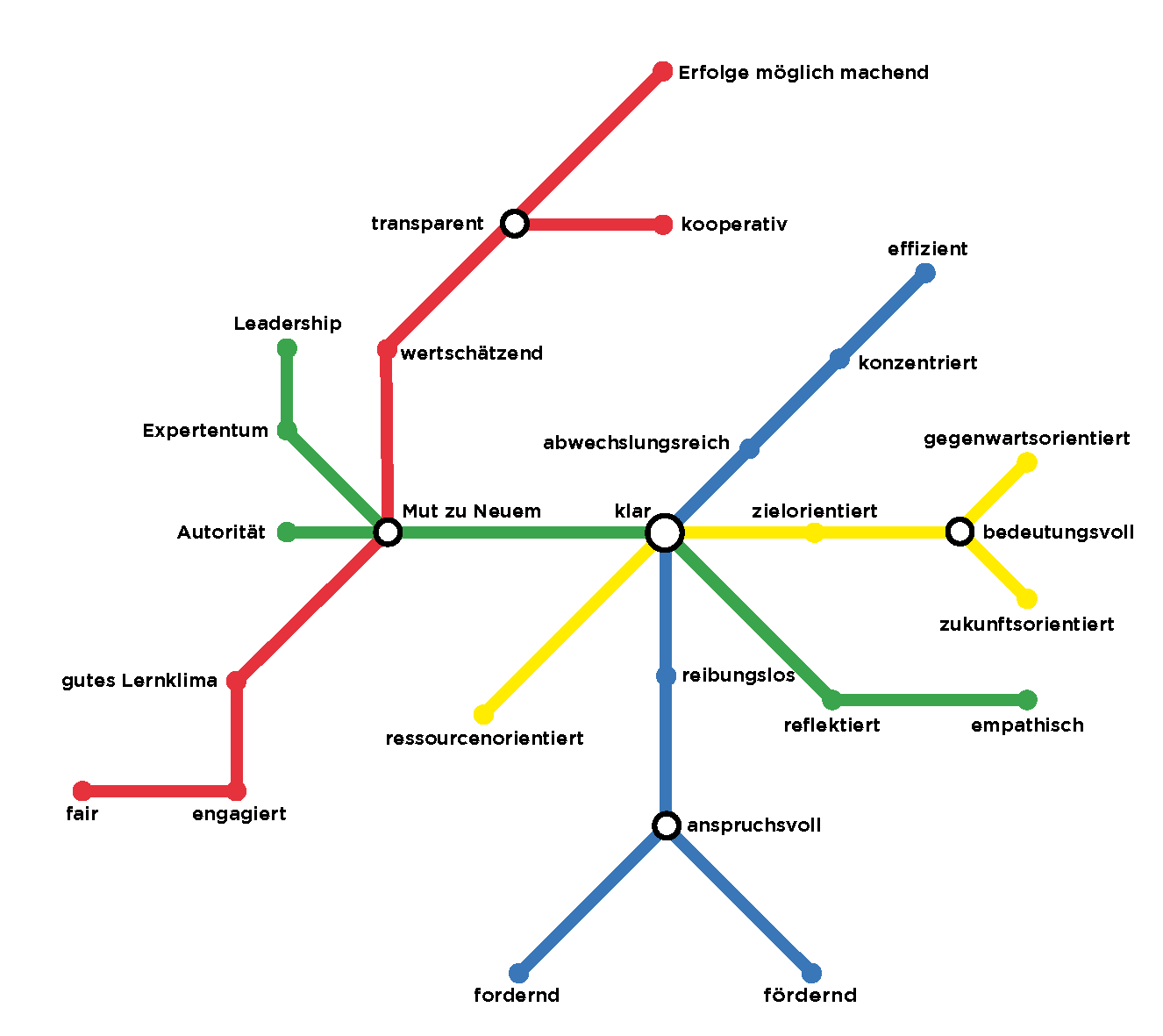13 Jan 2020
Classroom management is a key factor for successful teaching in all areas of teaching (see R. Arnold, J. Hattie, or J. Kounin). What exactly does classroom management mean? What, in terms of the work of a business owner, does this have to do with production and sales as well as his reflection on these processes? Text from Gaby Prost

The customers, alongside other stakeholders such as the state as a financier or the hiring companies, are the students while the product is the lesson.
Firstly, the customers, i.e. the students, need to be familiar with the virtual overall product; it needs to be explained in a comprehensible manner, i.e. in the students’ language. This will clarify which competencies must be acquired and why, how, when, and with what methods. This inclusion of the students is the starting point for their motivation and therefore their commitment to the development of the overall product. If the students understand the requirements and significance of the relevant subject, they can set clear priorities in their work. The more motivated and committed students are in the classroom, the better the course. Classroom management begins as soon as the course leaders enter the school. Students “psychoanalyse” teachers from a very young age and know exactly how to rate their demeanour. So, every contact is incorporated into the evaluation of the relationship. A good relationship or rapport is important for the climate in the classroom. The ideal is a combination of empathic closeness with professional detachment.
Classroom management becomes more concrete as soon as the lesson begins. The latter should run smoothly and be varied, as variation in teaching methods and thus the avoidance of monocultures help prevent boredom. At the same time, the product must satisfy high demands and, to achieve this, the students (and occasionally the lecturers) must leave their comfort zone. “Learning is painful” is the title of a book by F. Oser and M. Spychiger, because when anything new is created what is old must be rejected. The hardest thing about good classroom management is probably smoothness. Not only do lecturers need good technical skills, they also require “with-it-ness”, as Kounin puts it. In other words, a good overview of everything that is happening in the classroom. They should respond to any disturbance appropriately. Obviously, lecturers have diverse expectations here; these have to be formulated and made transparent before they can be enforced coherently. As mentioned above, rhythm and variety are absolutely essential in teaching. Remember: The generation currently sitting in the classrooms of technical universities grew up with technical media that have a switch-off time of little more than 10 to 15 seconds. If the lesson pauses for longer the students will immediately busy themselves with a second screen. This is the dilemma of teaching in a digitalised world! Lecturers can either ban this distraction from the classroom or involve students in a lesson that is so challenging and rhythmic in its structure that there is no opportunity to switch. Besides expertise in the subject, lecturers also need the reflexivity required to constantly question their own values and teaching. A few stops on the route to good classroom management are displayed on the tube map (created with http://beno.uk/metromapcreator). The green line shows important traits of lecturers, the red line presents ideas relating to the learning climate, the blue line depicts the methodology, and the yellow line displays the content. It is important to ask oneself: Is what I’m doing correct? Is it still right? Or is it just the easiest way? What if this article has raised more questions for you than answers? Perfect. After all, “Questions are the answer,” as Hal Gregersen explains in his latest book.

STATIONS FOR THE TUBE MAP
Line 1 (blue) ➜ efficient / clear / demanding / smooth / focused / encouraging / challenging / varied
Line 2 (green) ➜ leadership / reflection / empathy / expertise / courage to change / authority / clarity
Line 3 (red) ➜ good learning climate / appreciative / cooperative / committed / fair / transparent / success-enabling / differentiating / courage to change
Line 4 (yellow) ➜ meaningful / goal-oriented / present-oriented / future-oriented / resource-oriented / problem-oriented / clear